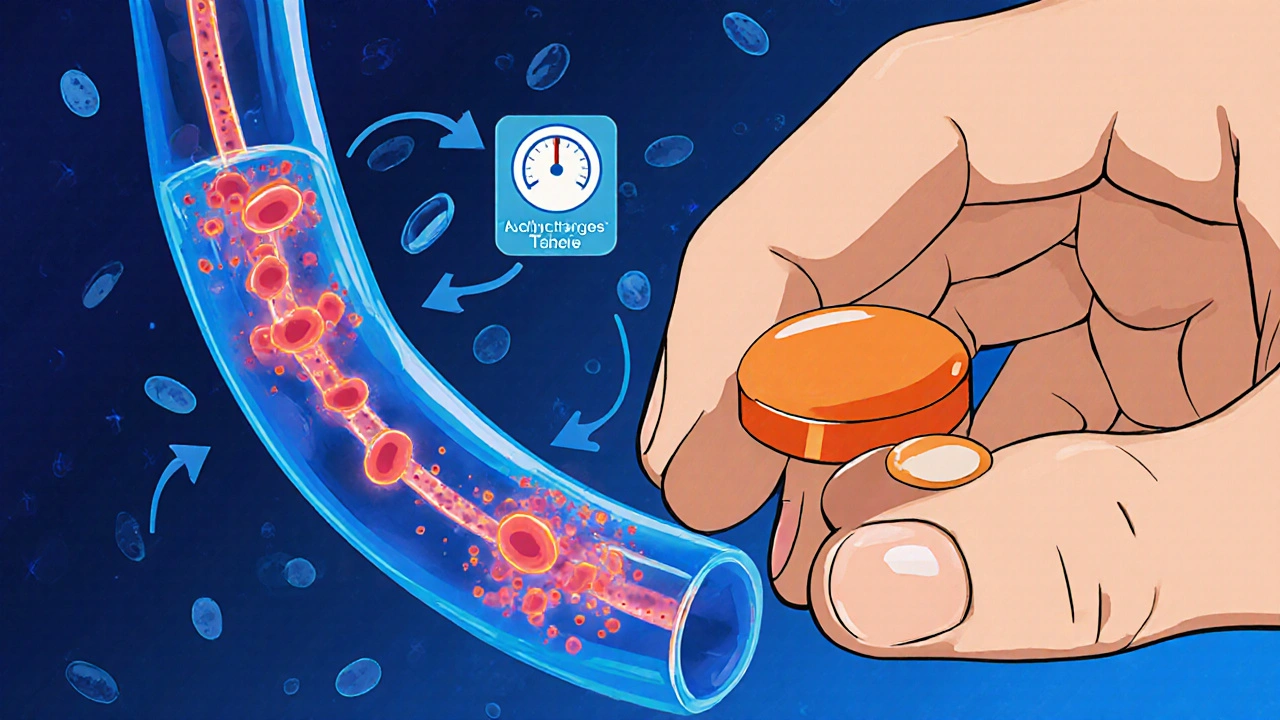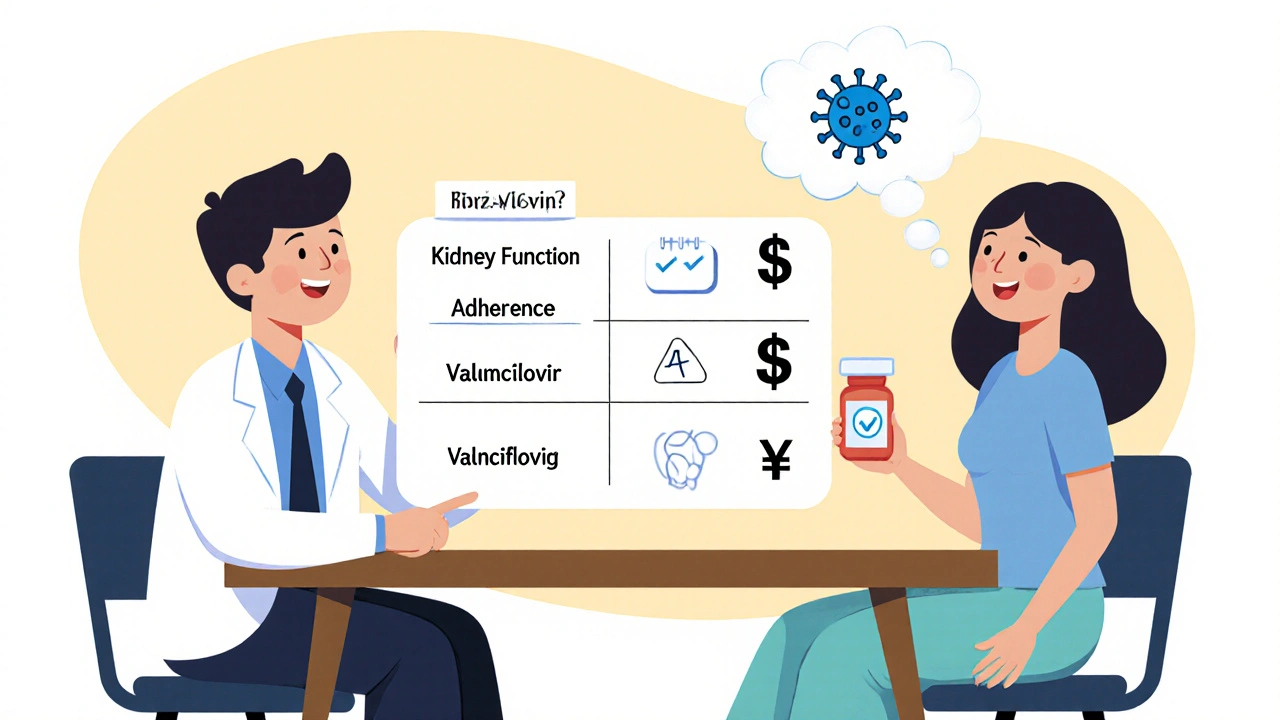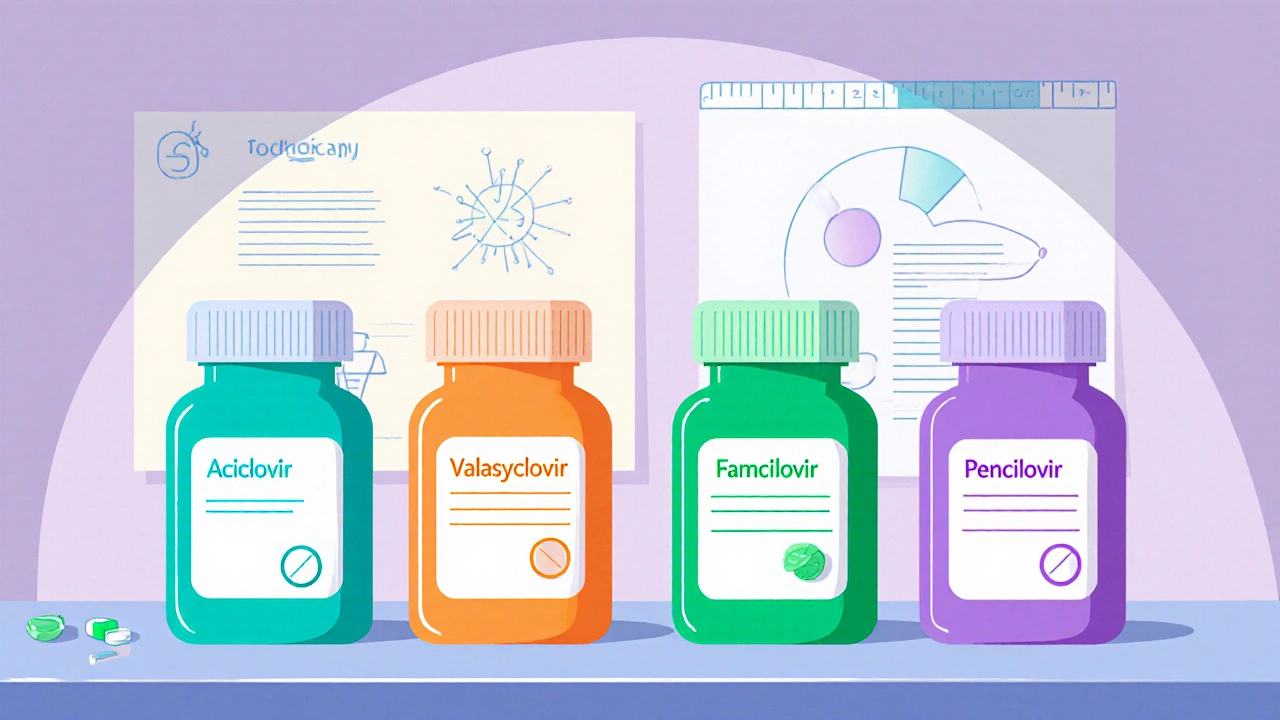Antiviral Treatment Selector
Choose Your Treatment Factors
Recommended Treatment
Key Takeaways
- Aciclovir is the oldest oral antiviral for HSV and VZV, but newer drugs offer better bioavailability.
- Valacyclovir delivers 3‑4 times more active drug in the bloodstream, allowing twice‑daily dosing.
- Famciclovir is the go‑to choice for shingles in many countries due to its once‑daily regimen.
- Penciclovir is only available as a cream, useful for mild cold‑sores but not for systemic infections.
- Cost, side‑effects, and kidney function are the biggest factors when picking an antiviral.
When it comes to treating herpes infections, Aciclovir is a nucleoside analogue that stops the virus from copying its DNA. It was first approved in the early 1980s and remains a staple in many formularies. Aciclovir works well for cold sores, genital herpes, and shingles, but newer options promise easier dosing and fewer side‑effects. Below we break down the most common alternatives, compare how they stack up, and help you decide which one fits your situation.
What is Aciclovir?
Aciclovir is a synthetic analogue of guanosine that interferes with viral DNA polymerase. Once inside infected cells, it is phosphorylated by a viral enzyme, turning it into a triphosphate that blocks chain elongation. The drug is taken orally or applied as a 5% cream for mild lesions.
Typical oral dosage for an adult with a first‑time genital outbreak is 400mg five times a day for 7‑10days. For shingles, the dose jumps to 800mg five times daily for 7days. The drug is excreted unchanged by the kidneys, so kidney function must be monitored, especially in older adults.
Top Alternatives to Aciclovir
Three newer antivirals dominate the market:
- Valacyclovir - a pro‑drug that converts to aciclovir once absorbed, offering superior bioavailability.
- Famciclovir - another pro‑drug, but it becomes penciclovir inside the body, which has a longer half‑life.
- Penciclovir - available only as a topical cream, it’s useful for mild oral lesions but not for systemic disease.
How the Drugs Differ: A Side‑by‑Side Look
| Attribute | Aciclovir | Valacyclovir | Famciclovir | Penciclovir (cream) |
|---|---|---|---|---|
| Formulation | Oral tablets, 5% cream | Oral tablets | Oral tablets | Topical 1% cream |
| Bioavailability | 15‑30% | 55‑70% | 77% | Topical only |
| Typical dose for genital herpes | 400mg 5×/day 7‑10days | 1g 2×/day 5‑10days | 250mg 3×/day 5‑7days | Apply 5×/day for 5‑7days |
| Typical dose for shingles | 800mg 5×/day 7days | 1g 3×/day 7days | 250mg 3×/day 7days | Not indicated |
| Half‑life (active form) | ~3hours | ~3hours (same active) | ~14hours (penciclovir) | ~3hours (topical) |
| Common side‑effects | Nausea, headache, kidney stress | Headache, nausea, rare kidney issues | Headache, dizziness, rare rash | Local itching, mild burning |
| Cost (US $ per treatment course) | ≈$30‑$50 | ≈$70‑$120 | ≈$80‑$130 | ≈$15‑$25 |

When to Choose Aciclovir
If you’re on a tight budget, Aciclovir is still the most affordable option. It’s also the drug of choice for patients with limited renal function when the dose can be carefully adjusted. In many low‑resource settings, the 5% cream remains the only locally available topical antiviral.
Because Aciclovir needs to be taken five times a day for some indications, adherence can be a problem. If you’ve struggled with missed doses in the past, a drug with fewer daily pills may be worth the extra cost.
Why Valacyclovir Often Beats Aciclovir
Valacyclovir’s main selling point is its high oral bioavailability. That means you get more drug in your bloodstream from the same amount of medication. The practical upshot? You can treat an outbreak with just two pills a day, dramatically improving adherence.
Studies published in the Journal of Antimicrobial Chemotherapy in 2023 showed that valacyclovir cleared genital herpes lesions about 1‑2days faster than standard Aciclovir regimens. For shingles, the reduced dosing schedule (three times a day) also cuts the risk of kidney overload.
Famciclovir: The Shingles Specialist
Famciclovir converts to penciclovir, which stays inside infected cells longer than aciclovir. That longer half‑life translates to once‑ or twice‑daily dosing for most indications. In Australia, famciclovir is the preferred oral antiviral for shingles because the once‑daily schedule fits well with older patients who may already be on multiple medications.
Clinical guidelines from the Australian Therapeutic Guidelines (2024 edition) recommend famciclovir 500mg twice daily for acute herpes zoster, citing comparable efficacy to valacyclovir but with a slightly better safety profile in patients with mild renal impairment.
Topical Penciclovir: When Size Matters
Penciclovir cream is a niche player. It only works on the skin surface, so it’s ineffective for deep or systemic infections. However, for a first‑time cold sore that appears on the lip, a 5% penciclovir cream can shave off a day of viral shedding compared with no treatment. The downside is that you must apply it at least five times a day, which many find inconvenient.

Factors to Weigh Before Picking an Antiviral
- Kidney function: Aciclovir and valacyclovir are cleared renally. If creatinine clearance is below 30mL/min, doses need adjustment or an alternative like famciclovir may be safer.
- Adherence: Fewer daily pills usually mean better compliance. Valacyclovir and famciclovir win here.
- Cost: Generic aciclovir is cheapest, but insurance coverage varies. Check your pharmacy benefits before deciding.
- Severity of infection: For severe shingles or disseminated HSV, higher dosing of aciclovir or IV formulations may be required.
- Drug interactions: Valacyclovir can raise levels of certain nephrotoxic drugs like aminoglycosides. Always discuss current meds with a clinician.
How to Switch Safely
If you’re already on Aciclovir and want to move to Valacyclovir or Famciclovir, there’s no need for a wash‑out period-just stop Aciclovir and start the new drug at the recommended dose. However, keep an eye on kidney labs during the first week, especially if you have a history of renal issues.
Bottom Line
Aciclovir remains a solid, affordable choice for most herpes‑related infections, especially when cost is a concern or when patients have mild kidney impairment. Valacyclovir offers better convenience and a slight efficacy edge, making it the go‑to for people who struggle with five‑times‑daily dosing. Famciclovir shines for shingles and for patients who need a longer‑acting drug with fewer pills. Topical penciclovir is only useful for very mild mouth lesions.
Talk to your pharmacist or doctor about your specific health profile, insurance coverage, and how often you experience outbreaks. The right antiviral will balance effectiveness, safety, and practicality for you.
Frequently Asked Questions
Can I take Aciclovir and Valacyclovir together?
No. Both drugs convert to the same active molecule and using them together offers no added benefit while increasing the risk of kidney side‑effects.
Is Aciclovir safe during pregnancy?
Aciclovir is classified as Pregnancy Category B in the US, meaning animal studies show no risk and there are no well‑controlled studies in humans. Doctors often prescribe it when the benefits outweigh potential risks.
How fast does Valacyclovir work compared to Aciclovir?
Because Valacyclovir reaches higher blood levels, lesions typically heal 1‑2days sooner than with standard Aciclovir dosing, according to multiple randomized trials.
Can I use Penciclovir cream for genital herpes?
No. The cream only works on the skin surface and cannot reach the deeper tissue involved in genital outbreaks. Oral antivirals are required.
What should I do if I miss a dose of Aciclovir?
Take the missed dose as soon as you remember, unless it’s almost time for the next dose. Then skip the missed one-don’t double up, as that can increase kidney stress.


Samantha Oldrid
October 16, 2025 AT 20:15Oh sure, because everyone loves popping pills five times a day. If you can’t handle that, maybe you’re just too lazy to follow basic medical advice.
Richard O'Callaghan
October 25, 2025 AT 18:04I dunno why u r still using aciclovir when the new stuff is way better...its like using a rotary phone in 2024. Plus the dosing schedule is a nightmare for anyone with a real life.
Nickolas Mark Ewald
November 3, 2025 AT 14:53Aciclovir works fine if cost is a concern, but valacyclovir’s twice‑daily dosing really helps patients remember to take it. It also tends to clear lesions a day or two faster in most studies.
Chris Beck
November 12, 2025 AT 12:42Brits have always known how to pick the right meds-no need for fancy American drugs! The UK prefers famciclovir for shingles, it’s simple and effective.
Tom Green
November 21, 2025 AT 10:31That’s a solid point about the UK’s preference; the once‑daily regimen can be a real lifesaver for older patients who juggle multiple prescriptions. It’s great to see guidelines that balance efficacy with practicality.
Emily Rankin
November 30, 2025 AT 08:20In the grand theatre of antiviral medicine, each drug steps onto the stage with its own tragic hero’s destiny.
Aciclovir, the venerable elder, carries the weight of decades, a steadfast guardian against the viral tide.
Yet its frequent dosing is a relentless drumbeat, echoing the relentless march of the virus itself.
Enter valacyclovir, the charismatic newcomer, whose bio‑availability glows like a beacon in the night, promising ease and swiftness.
Its twice‑daily cadence sings a lullaby of compliance, coaxing patients to stay the course.
Famciclovir, the quiet philosopher, lingers longer within cells, gifting a half‑life that whispers of fewer pills and gentler mornings.
For shingles, its once‑daily rhythm feels like a soft sunrise after a storm of pain.
And then there is the modest penciclovir cream, a humble artisan, crafting relief on the skin’s surface but powerless against deeper battles.
The choice of drug becomes a reflection of one’s life-budget, kidney health, and the capacity to remember each dose.
Renal function, that silent sentinel, dictates a cautious approach, nudging clinicians toward gentler alternatives.
Cost, the ever‑present shadow, often forces the hand of the patient, making the cheap aciclovir a necessary compromise.
Side‑effects, those uninvited guests, remind us that even the best intentions can carry risk.
Insurance coverage weaves its own tapestry, sometimes pulling the rug from beneath a preferred regimen.
Thus, the clinician must become a diplomat, balancing efficacy, safety, and the patient’s daily reality.
In the end, the optimal antiviral is not a one‑size‑fits‑all but a personalized pact between medicine and the individual.
Rebecca Mitchell
December 9, 2025 AT 06:09Wow that's a lot of info just incredible
Roberta Makaravage
December 18, 2025 AT 03:58Let’s get real, folks 😏. If you’re still debating aciclovir vs valacyclovir, you’re missing the point-adherence wins. 🏆 Choose the drug that fits your lifestyle, not the one that looks fancy on a pamphlet. 💊✨